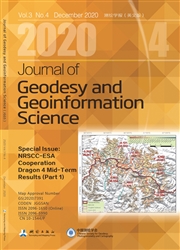Monitoring Greenhouses Gases over China Using Space ̄Based Observations Monitoring Greenhouses Gases over China Using Space-Based Observations
作者:Hartmut BOESCH,Yi LIU,Paul I PALMER,Johanna TAMMINEN,Jasdeep S ANAND,Zhaonan CAI,Ke CHE,Huilin CHEN,Xi CHEN,Liang FENG,Janne HAKKARAINEN,Pauli HEIKKINEN,Nikoleta KALAITZI,Rigel KIVI,Robert PARKER,Peter SOMKUTI,Jing WANG,Alex WEBB,Dongxu YANG,Lu YAO,You YI
摘要:The atmospheric carbon dioxide(CO 2)concentration has increased to more than 405 parts per million(ppm.1 ppm=10-6 m/s 2)in 2017 due to human activities such as deforestation,land-use change and burning of fossil fuels.Although there is broad scientific consensus on the damaging consequences of the change in climate associated with increasing concentrations of greenhouse gases,fossil CO 2 emissions have continued to increase in recent years mainly from rapidly developing economies and China is now the largest emitter of CO 2 generating about 30%of all emissions globally.To allow more reliable forecast of the future state of the carbon cycle and to support the efforts for mitigation greenhouse gas emissions,a better understanding of the global and regional carbon budget is needed.Space-based measurements of CO 2 can provide the necessary observations with dense coverage and sampling to provide improved constrains on of carbon fluxes and emissions.The Chinese Global Carbon Dioxide Monitoring Scientific Experimental Satellite(TanSat)was established by the National High Technology Research and Development Program of China with the main objective of monitoring atmospheric CO 2 and CO 2 fluxes at the regional and global scale.TanSat has been successfully launched in December 2016 and as part of the Dragon programme of ESA and the Ministry of Science and Technology(MOST),a team of researchers from Europe(UK and Finland)and China has evaluated early TanSat data and contrast it against data from the GOSAT mission and models.In this manuscript,we report on retrieval intercomparisons of TanSat data using two different retrieval algorithms,on validation efforts for the Eastern Asia region using GOSAT CO 2 data and first assessments of TanSat and GOSAT CO 2 data against model calculations using the GEOS-Chem model.
发文机构:Department of Physics and Astronomy National Centre for Earth Observation NCEO Key Laboratory of the Middle Atmosphere and Global Environmental Observation School of GeoSciences National Centre for Earth Observation NCEO Finnish Meteorological Institute Groningen University
关键词:carboncyclespectroscopysatelliteremotesensing
分类号: F42[经济管理—产业经济]
- Near-zone Direct and Indirect Topographic Effects Based on the Rectangular Prism and Surface Element
- Satellite Positioning and Orbit Determination System(SPODS):Introduction and Evaluation
- Solar Radiation Pressure Modeling and Application of BDS Satellites
- Journal of Geodesy and Geoinformation Science Aims and Scopes
- Object Detection Research of SAR Image Using Improved Faster Region-Based Convolutional Neural Network
- Parameter Group Optimization by Combining CUBE with Surface Filtering and Its Application
- MHSS ARAIM Algorithm Combined with Gross Error Detection
- Automatic Matching of Multi-scale Road Networks under the Constraints of Smaller Scale Road Meshes
- Applicability of Bevis Formula at Different Height Levels and Global Weighted Mean Temperature Model Based on Near-earth Atmospheric Temperature
- Satellite Image Matching Method Based on Deep Convolutional Neural Network


